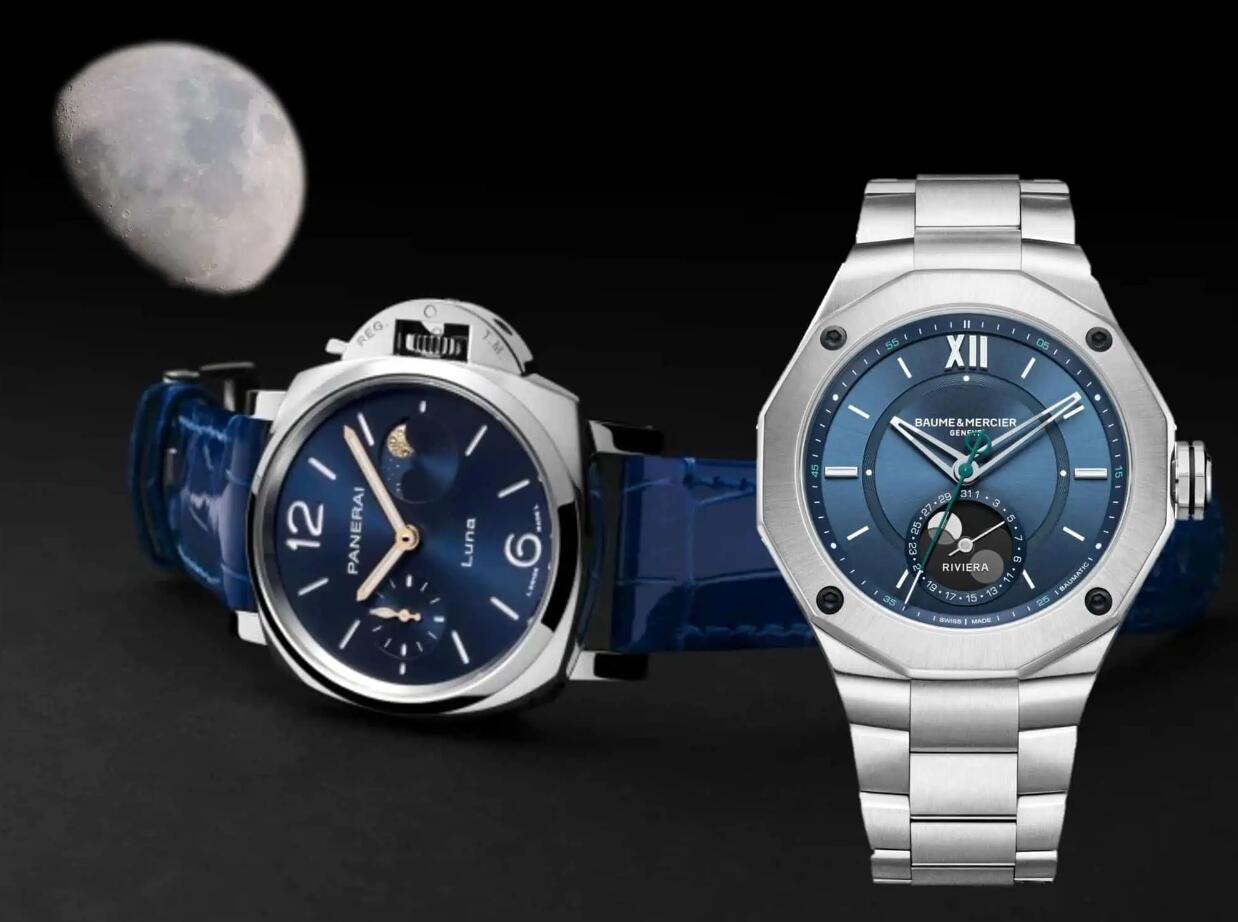How you like it: Replica Panerai Luminor Due Luna PAM01179 and Baume & Mercier Riviera Baumatic Moon Phase M0A10682
The Panerai Luminor Due Luna PAM01179 and Baume & Mercier Riviera Baumatic Moon Phase M0A10682 appeal to different buyers. What you like depends on your personal taste, but also on your available budget. Both Baume & Mercier and the Panerai model offer self-winding and a moon phase display.
Moon facts
The moon comes and goes. It is no different with the new Panerai Luminor Due Luna and Baume & Mercier Riviera Moon Phase wristwatches. As we know, the pale satellite of the Earth is constantly circling our blue planet. The angle between the Earth, the moon and the sun changes with beautiful regularity. Moon phases are the different light shapes of the moon that are visible from Earth. They come about because parts of the half of the moon that is currently illuminated by the sun are facing the Earth. At a new moon, the side of the moon facing away from the earth is in sunlight, while at a full moon, the visible half is.
By the way, when we humans look up at the sky, we always see the same side. The totality of all phases of the moon is called lunation.

If you want to be informed even when the sky is overcast, you can use a lunar calendar or a timepiece with a moon phase display. The latter has been around for many centuries. This additional function, which is relatively easy to produce, found its way onto the wrist in the Roaring Twenties. Since then, it has enjoyed more or less great popularity. Quite a few people trust the secret power of the moon. When it comes to gathering medicinal herbs, sowing lettuce or felling trees, for example, the right time can play an important role. Esoterically inclined women believe that perms done on Virgo moon days last the longest.

Moon clocks
Inaccurate clocks, it is said, somehow follow the moon. In the case of models with a simple moon phase display, this is at least true of the accuracy of the display. This results from a little trick that watchmakers have used for centuries to be able to visualize the phases of light with relatively simple means.

Astronomically, the time interval from new moon to new moon in the synodic month is exactly 29 days, 12 hours, 44 minutes and 3 seconds. This equates to 29.53059 days. However, dealing with this odd number correctly requires some design effort. Rounding down to 29 days is clear. But this value also works after multiplying by two. This produces a disk with 59 teeth and 2 opposing moons. Traditionally, this moon disk rotates behind the dial.
